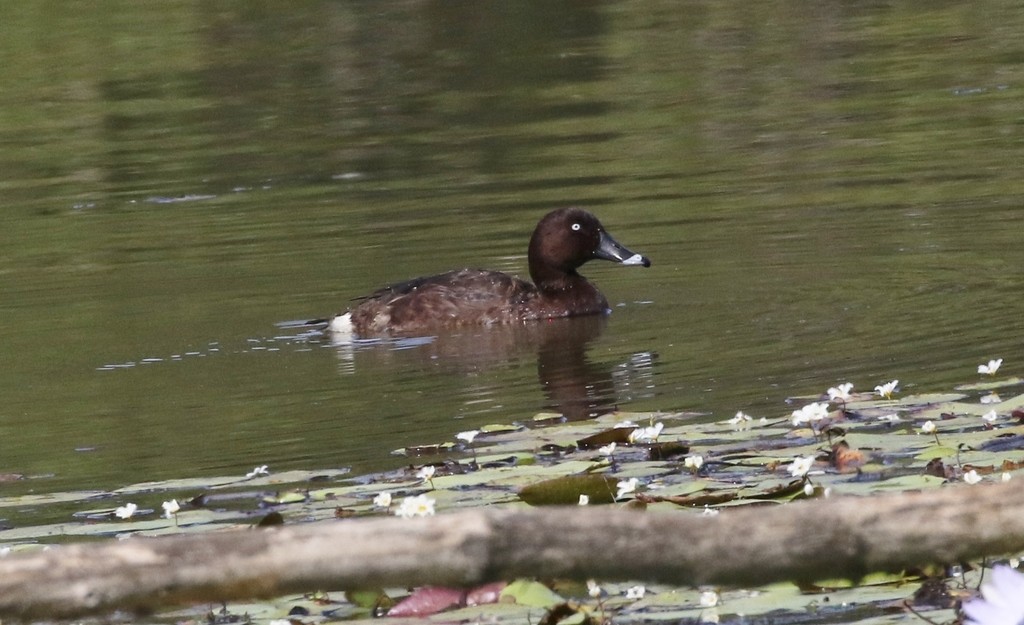Hardhead
A species of Diving ducks, Also known as White-eyed Duck Scientific name : Aythya australis Genus : Diving ducks
Hardhead, A species of Diving ducks
Also known as:
White-eyed Duck
Botanical name: Aythya australis
Genus: Diving ducks
Content
Description People often ask General Info
 Photo By silversea_starsong , used under CC-BY-NC-4.0 /Cropped and compressed from original
Photo By silversea_starsong , used under CC-BY-NC-4.0 /Cropped and compressed from original Description
The hardhead (Aythya australis) (also white-eyed duck) is the only true diving duck found in Australia. Hardheads are common in the south-east of Australia, particularly in the Murray-Darling Basin, but also in the wetter country near the coasts. They are moderately nomadic in normal years, but disperse widely in times of drought. Significant numbers reach as far afield as New Guinea, New Zealand, and the islands of the Pacific, where they can remain for some time, even breeding for a season or two. Like the other members of the pochard group, hardheads feed by diving deeply, often staying submerged for as long as a minute at a time. They slip under the water with barely a ripple, simply lowering their heads and thrusting with their powerful webbed feet. They eat a broad range of small aquatic creatures, and supplement this with water weeds. Hardheads prefer larger lakes, swamps and rivers with deep, still water, but are often seen in smaller streams, flooded grasslands, and shallow pools. As a general rule, they avoid coastal waters. They rarely come to land and never perch in trees. Hardheads are small by duck standards, usually not much more than 45 cm long but reaching 60 cm sometimes, and noticeably more rounded in overall form than most ducks. Both male and female are a fairly uniform chocolate-brown above, with rufous flanks and white undersides (which are often not visible if the duck is in the water). The trailing edges and almost the entire underside of the wings are white. In the male, the eyes are a striking white, in the female, brown. 
Size
49 cm
Colors
Brown
Black
Bronze
White
Life Expectancy
4.8 years
Nest Placement
Ground
Feeding Habits
Hardhead primarily consume small aquatic animals and supplement their diet with water plants. They forage by diving and have unique adaptations for an aquatic diet. Their feeding aligns with the availability of prey.
Habitat
Hardhead's habitat spans freshwater environments, with a proclivity for deep, vegetated lakes, swamps, and rivers. These birds are versatile, inhabiting diverse wetlands including flooded grasslands and stagnant pools, yet typically steer clear of coastal areas. They adapt to artificial aquatic habitats and even saline inland and coastal lagoons. Hardhead shows nomadic tendencies, especially under drought conditions, avoiding terrestrial regions except during feeding.
Dite type
Aquatic invertebrate eater
General Info
Feeding Habits
Bird food type
Species Status
Not globally threatened.